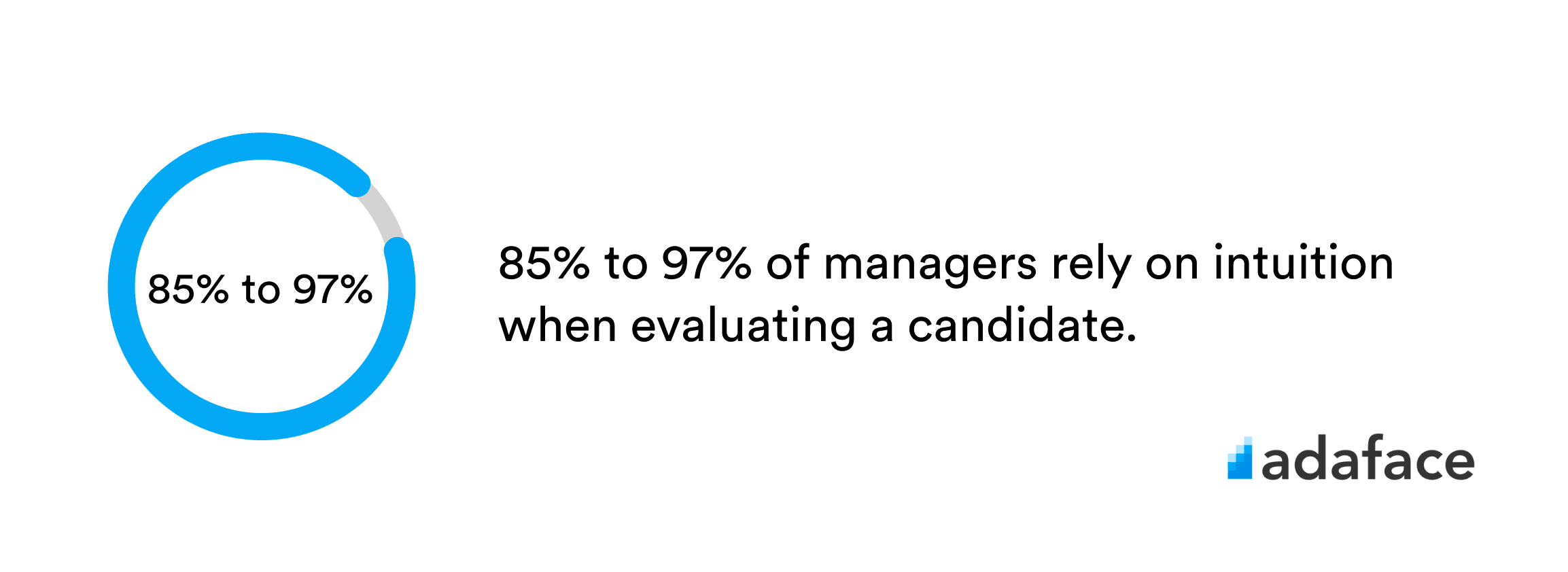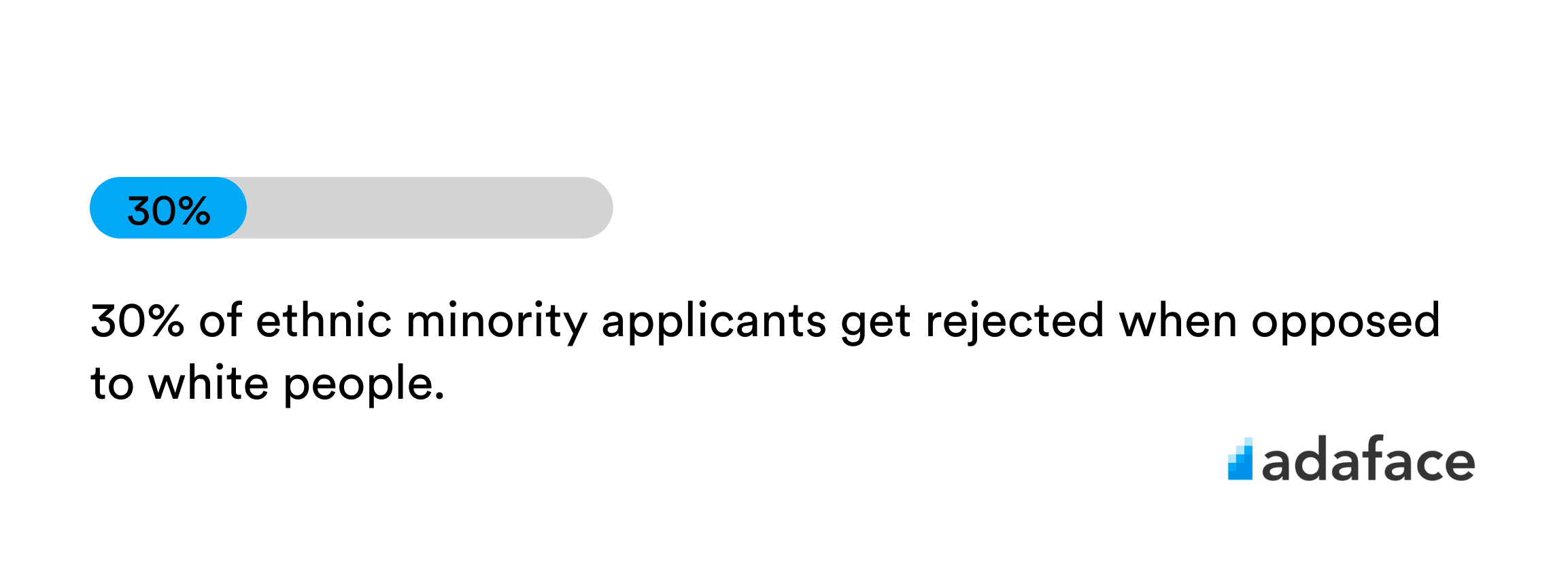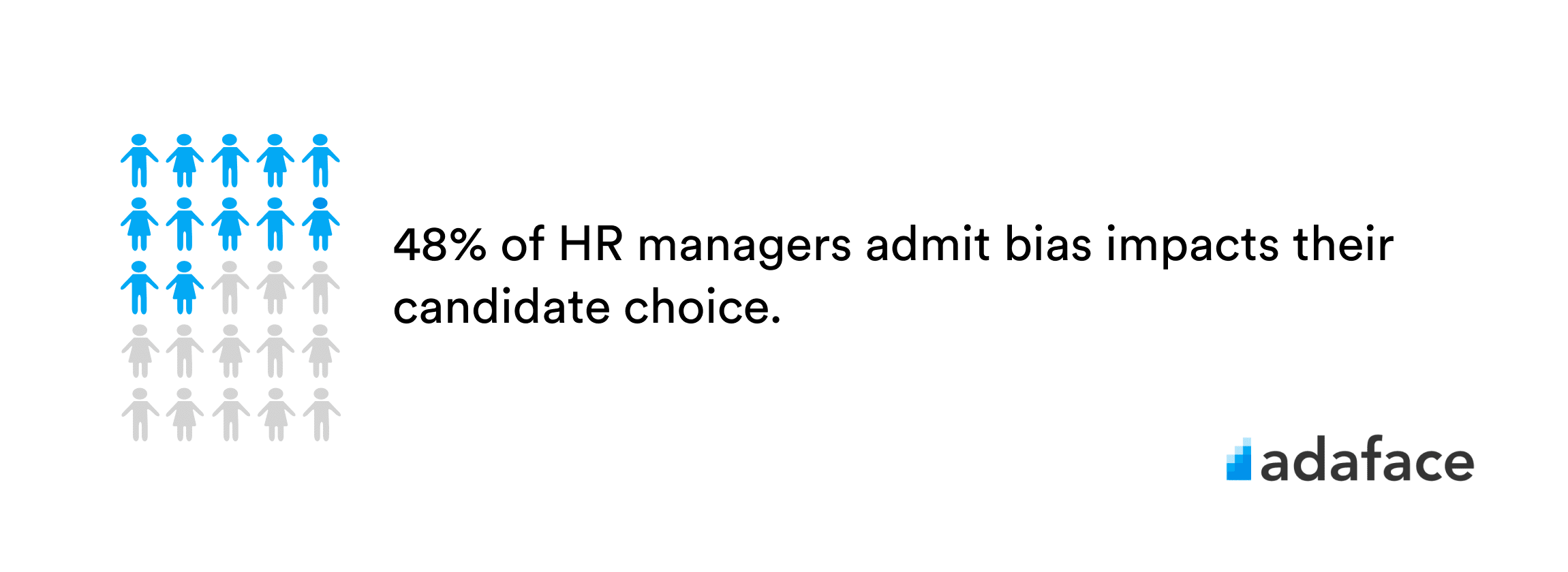
Did you know that minority applicants resort to "whitening" their resumes to get an interview? They accomplish this by changing their first name or removing extracurricular activities from their resumes, such as being part of undergraduate social groups that might reveal their race.
Their interview callbacks doubled as a result of this strategy.
This shows that hiring managers, intentionally or unintentionally, avoid giving candidates a chance by simply looking at their names and drawing conclusions about their ethnicity.
This is the kind of bias that gets included in the hiring process when you resort to traditional hiring practices. As a result, employers have begun to resort to blind hiring techniques, which are meant to eliminate any bias from the hiring process and hire the most skilled person for the role.
The following statistics will give you all the information on the effectiveness and usefulness of blind recruiting. We also outline the pros and cons of blind hiring, which can help you decide if this hiring practice is right for your organization.
What is Blind Hiring?
Blind hiring is a practice that is used to hire the most skilled professional by eliminating all personal information (such as gender, race, ethnicity, etc.) from the hiring process.
Blind Hiring Statistics
Research from PwC shows that 20% of women experience gender discrimination in recruitment.
One of the main reasons for using blind hiring practices is to eliminate gender discrimination. Irrespective of what job role it is, 1 in 5 women experience discrimination in recruitment as opposed to 1 in 20 when it comes to men.

85% to 97% of managers rely on "gut" or intuition to some degree when evaluating a candidate.
When you have identical candidates to fill the job roles for your organization, you encounter a dilemma and, in the end, "go with your gut" when you make the final hiring decision. However, you are unaware that your gut consists of a significant amount of unconscious bias that you are unaware of.
A study finds that 'resume whitening' doubles callbacks for minority job candidates.
Minority applicants have received twice the number of callbacks when sending out "whitened resumes". They achieve this by strategies like altering their first name in the resume or leaving out extra-curricular activities such as being part of undergraduate student groups which could reveal their race.
Nearly half of employers (47%) say that if they do not find a candidate online, they are less likely to call them for an interview.
According to a CareerBuilder survey, 20% of employers feel the candidate must have an online presence. Many candidates lose potential job opportunities solely because they do not have an online presence.

Nearly 30% of ethnic minority applicants were discriminated against in favour of white people.
According to research, nearly one-third of ethnic minority applicants were denied an interview solely on the basis of their ethnicity, whereas white people with identical qualifications were given the opportunity to interview for the same job role.
74% of CEOs seek the best talent regardless of geography or demographics.
With remote work increasing significantly over the past couple of years, most companies are looking to hire the most talented individual, regardless of geography or demographics.
71% of employers say diversity practices positively impact their company.
This is one of the key positive impacts of diversity hiring. Research also shows that companies with a diverse workforce are more likely to have financial returns above the industry median.

Almost half (48%) of HR managers admit bias impacts their candidate choice.
A survey by SomeoneWho found that most HR managers were either sure that bias affected their candidate choice or unsure how it affected their choice. Only a small percentage of managers believed that their decisions were unprejudiced.
Pros and Cons of Blind Hiring
The statistics point to the fact that blind hiring can benefit your organization in a significant way. However, like all hiring practices, it also has its drawbacks.
Pros
- Blind hiring helps in removing most bias that comes with traditional hiring practices and can result in a more diverse workforce which is purely based on skill rather than gender, race or ethnicity.
- Employers are more likely to get inclined to hire candidates who have prior experience from well-known companies. This is precisely what blind recruiting enables you to do. By excluding any personal information on the employees, you can focus solely on the candidate's qualifications instead of being influenced by unconscious bias introduced when you are exposed to their inclinations and information about the candidate.
- Blind hiring results in a more diverse and highly skilled workforce, as hiring decisions are based solely on skill instead of your gut.
Cons
- Blind hiring can be effective only in the elimination of candidates, not in their selection. That means that personal information about the candidates can be excluded only up until a certain point in the hiring process. Most of the time, final interviews are face-to-face, which includes bias in the hiring process.
- Blind hiring offers credible information regarding the candidate's work history but has no way of determining their cultural fit into your organization. Cultural fit is one of the key factors that several present-day companies look at when making new hires.
- Besides new graduate hires, most hiring decisions are made through referrals. However, blind recruitment cannot accommodate the use of referrals because personal information is already known to the hiring manager when it is a referral.
The Final Verdict
Clearly, the blind hiring methodology has its benefits. However, it still is not the one-stop solution for all hiring decisions. By carefully analyzing the pros and cons of blind hiring, you can gauge the extent to which you want to use blind hiring for your organization in order to optimize your hiring process.
By combining blind, referral, and skill-based hiring techniques, you can optimise for not only finding the best candidate for the role but also for incorporating diversity into your hiring process.

Pragnesh is the EiR at Adaface. He loves reading books more than scrolling through social media, which is a big deal if you ask him.
Spending too much time screening candidates?
We make it easy for you to find the best candidates in your pipeline-
with a 40 min skills test.


